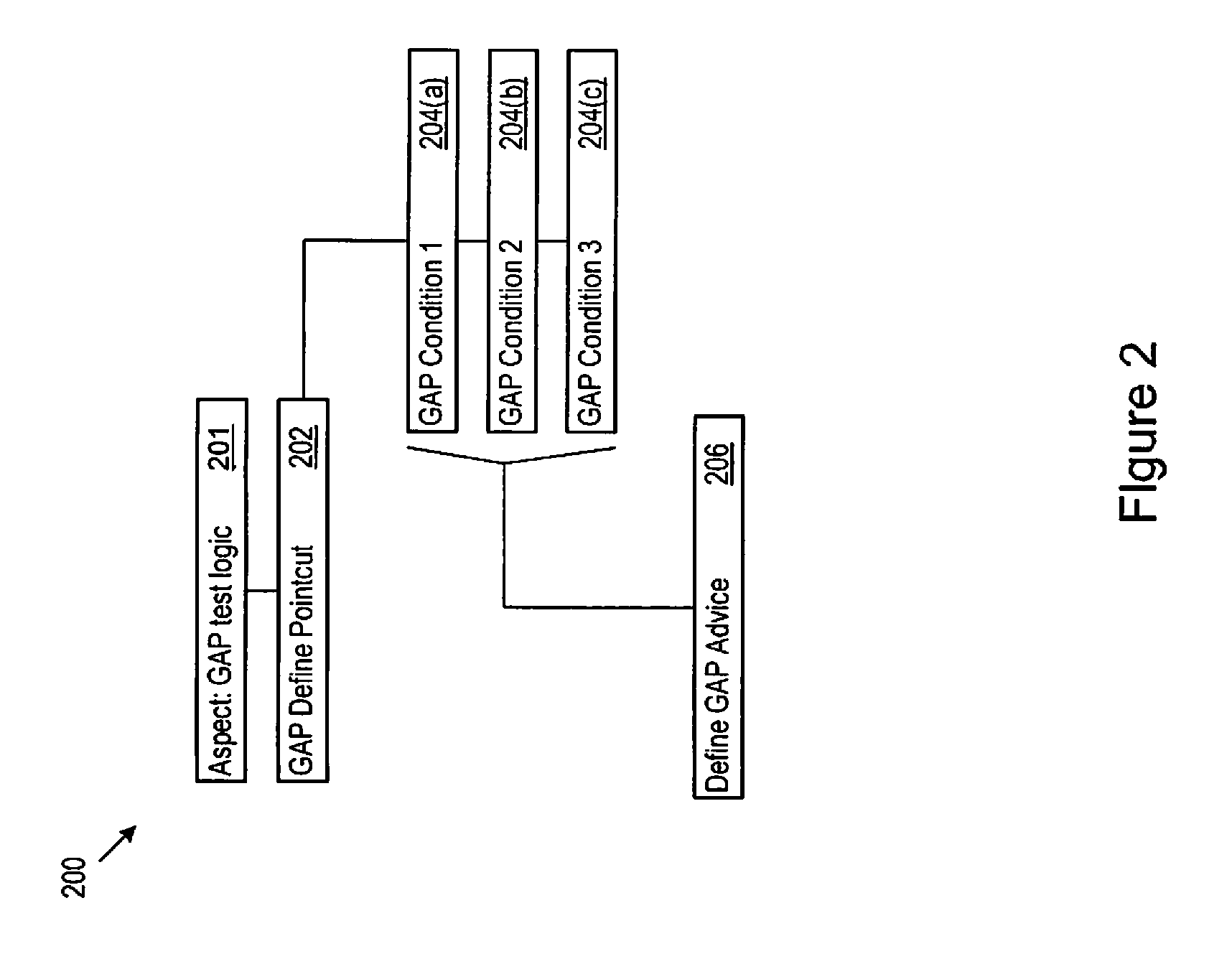Modularizing and aspectizing graphical user interface directed test scripts
a graphical user interface and script technology, applied in the field of modulearizing and aspectizing graphical user interface directed test scripts, can solve the problems of difficult to update test scripts when, difficult to test large-scale enterprise gaps manually testing is tedious, and laborious, so as to facilitate the efficient modification of test scripts, reduce time, cost and resource expenditure, the effect of reducing the number of test programming errors
- Summary
- Abstract
- Description
- Claims
- Application Information
AI Technical Summary
Benefits of technology
Problems solved by technology
Method used
Image
Examples
Embodiment Construction
[0031]FIG. 1 illustrates a test script execution system 100 (“system 100”) that includes a memory 120 having program elements for testing a graphical user interface application (GAP) 150 executed from memory 152 by a processor 160. The GAP 150 is depicted generally as having GAP management logic 154 for implementing the logical execution of a graphical user interface (GUI) program, and generating graphical user interfaces (e.g., GUI1-GUIN (156(a)-156(f))). The processor 160 executes the GAP management logic 154 which in turn may cause one or more of the GUIs GUI1-GUIN (156(a)-156(f) to appear on the screen 162. Each GUI 156(a)-156(f) may include any number of GUI elements 164, such as text boxes, radio buttons, drop down menus, scroll bars, or other GUI elements. A specific GUI element 166 is labeled in FIG. 1.
[0032]The program elements stored in memory 120 include a GAP test environment 122 and a reflective connector 140. The GAP test environment 122 includes a test script 128, tes...
PUM
 Login to View More
Login to View More Abstract
Description
Claims
Application Information
 Login to View More
Login to View More - R&D
- Intellectual Property
- Life Sciences
- Materials
- Tech Scout
- Unparalleled Data Quality
- Higher Quality Content
- 60% Fewer Hallucinations
Browse by: Latest US Patents, China's latest patents, Technical Efficacy Thesaurus, Application Domain, Technology Topic, Popular Technical Reports.
© 2025 PatSnap. All rights reserved.Legal|Privacy policy|Modern Slavery Act Transparency Statement|Sitemap|About US| Contact US: help@patsnap.com



